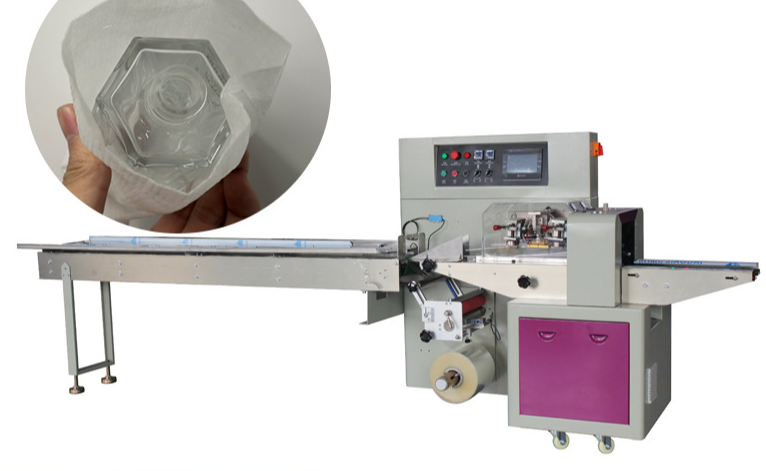In the pharmaceutical industry, packaging helps to prolong products’ shelf life. Among various storage options, blister packs stand out for their precision and durability. To meet strict regulatory standards, the developers must follow a clearly defined operational procedure.

That’s where the SOP for blister packing machine comes to the rescue. It serves as a standardized guideline to operate the equipment efficiently. Here’s a complete overview of the process.
What is an SOP for Blister Packing Machine?
To achieve uniformity in functions, a Standard Operating Procedure (SOP) is designed. It’s a detailed written instruction that guides personnel at every step of packaging. When it comes to blister machinery usage, the SOP provides clear regulations. It defines how to operate, monitor, clean, and maintain the equipment to produce defect-free packs.
For medication safety, a small deviation from established protocols can compromise product quality. So, the SOP for blister packing machine ensures process consistency.
SOP for Blister Pack Machine| Procedure Overview
This SOP for blister packing machine provides a step-by-step procedure to maintain equipment in a regulated production environment. Below is the comprehensive guide:
Objective and Scope
A clear objective ensures compliance across all blister packaging activities. From preparation to shutdown, following essential protocols allows you to meet regulatory standards.
- Objective: To establish a uniform and controlled process for blister packaging of tablets and capsules.
- Scope: This SOP for blister packing machine applies to all operators, supervisors, and quality assurance staff involved in packaging operations.
Responsibilities
Every team member has a critical role in maintaining machine efficiency and safety. Defining these roles ensures accountability and smooth workflow coordination.
- Machine Operator: Follow the SOP, handle materials properly, and record operational data.
- Production Officer: Verify setup and ensure the machine runs as per defined parameters.
- Quality Assurance (QA): Conduct line clearance, in-process checks, and final verification.
- Maintenance Team:Handle repairs, calibration, and preventive maintenance activities.
Preparations Before Operation
During packaging operations, pre-preparation is everything. This practice ensures a contamination-free environment and machine readiness before starting production. Each step minimizes the risk of batch mix-ups and ensures compliance with GMP.
- Ensure the machine and the nearby area are clean and free from any residue of previous batches.
- Attach the label “UNDER PROCESS” with batch details.
- Switch ON the utilities. It includes compressed air, chilled water, and vacuum.
- Obtain QA clearance before starting any operation.
- Check machine guards, sensors, and emergency buttons for functionality.
Equipment Setup
Even minor misalignment can lead to defective packaging. So, proper equipment setup ensures precision at every stage.
- Mount the forming film (PVC/PVDC) and lidding foil (aluminium) rolls properly.
- Tighten the reels using side clamps and align them for smooth unwinding.
- Fix the forming, sealing, and cutting dies as per product specifications.
- Adjust sealing rollers for proper pressure and alignment.
- Check all connections, lubrication points, and temperature controllers before proceeding.
Loading and Aligning Materials
This step ensures that tablets or capsules are evenly placed into the formed blisters.
- Load tablets or capsules into the product hopper.
- Adjust the feed channels and vibrator tray for uniform distribution.
- Set the vibrator speed from the control panel to ensure smooth feeding.
- Ensure the NFD (Non-Fill Detector) is working to detect missing tablets.
- Clean the feeder area to prevent dust accumulation.
Operation Procedure
Operating the blister pack machine involves careful monitoring of certain parameters. For instance, you need to optimize temperatures, pressures, and alignments.
- Switch ON the main power and control units.
- Set the heating temperatures for forming and sealing zones.
- Run empty cycles to check the web movement and sealing quality.
- Start with trial blisters to ensure correct forming, cutting, and printing.
- Once parameters are stable, begin production gradually.
- Continuously monitor the SOP for blister packing machine checklist. It includes sealing temperature, web tension, and air pressure.
In-Process Checks
Regular in-process checks confirm consistent sealing and print accuracy. This measure prevents defects and maintains product quality throughout the batch.
- Verify blister sealing integrity every 30 minutes.
- Check batch print accuracy and legibility.
- Monitor pack alignment and cutting precision.
- Record observations in the Batch Packing Record (BPR).
- Replace materials if wrinkling, sealing failure, or foil misalignment occurs.
Cleaning Procedure
ResearchGate study shows that validated cleaning protocols ensure process quality and compliance with GMP standards. Cleaning frequency depends on product type and batch changeover. Here’s the detail:
A. Type A Cleaning (Same Product):
- Turn off the power and label the machine “UNDER CLEANING.”
- Wipe surfaces with a dry lint-free cloth or vacuum residues.
- Apply 70% IPA for surface disinfection.
- Replace the label with “CLEANED” after inspection.
B. Type B Cleaning (Product Changeover or Maintenance):
- Dismantle contact parts such as rollers, feed channels, and guides.
- Wash with purified water and dry thoroughly.
- Perform visual and swab inspections before reuse.
- If idle for more than 72 hours, re-wipe with IPA before starting again.
Shutdown and Post-Operation Steps
Shutdown involves safely turning off the blister machine and preparing it for cleaning. This step ensures that no material residues affect the next batch. Following a structured shutdown process prevents material loss and improves machine longevity.
- Stop product feeding and run empty cycles to clear remaining materials.
- Switch off the heaters and control panels.
- Remove all remaining films and foils.
- Clean the machine according to the cleaning SOP.
- Label the machine “TO BE CLEANED.”
- Record final readings, downtime, and batch completion time in the equipment logbook.
Precautions and Safety Measures
Operator safety is a top priority during blister packaging operations. Compliance with safety SOPs reduces workplace hazards and ensures controlled handling of equipment.
- Never operate without foil or film in the sealing section.
- Avoid touching heated areas and moving parts during operation.
- Keep your hands clear of the forming and cutting stations.
- Always wear gloves, masks, and protective goggles.
- Ensure that the emergency stop button is functional.
- Follow QA clearance before every new batch or product change.
Abbreviations Used
| Abbreviation | Meaning |
| BPR | Batch Packing Record |
| NFD | Non-Fill Detector |
| PLC | Programmable Logic Control |
| PHR | Product Heat Roller |
| PSR | Pressure Sealing Roller |
| SOP | Standard Operating Procedure |
FAQS
Who prepares the SOP for Blister Packing Machine?
Usually, the Quality Assurance (QA) or Production department drafts and approves the SOP for blister packing machine. It is then verified by the engineering and validation teams before implementation.
What are Common Errors Avoided through SOP Compliance?
Following the SOPs helps you prevent misalignment of forming films. Also, you can avoid sealing temperature variations, air leaks, and improper cutting.
Can SOPs be customized for Different Blister Machines?
Yes, every SOP for a blister packing machine should be customized based on the model. Additionally, factors such as material type and manufacturer specifications are also considered.
Conclusion
The ‘SOP for blister packing machine’ forms the foundation of safe packaging processes. Adhering to each step aligns your processes to pharmaceutical standards. For maintaining accuracy across every blister batch, consider Finetech packaging solutions. We offer top-notch pharmaceutical machinery compliant with regulatory standards. So, upgrade your process efficiency with our reliable equipment.




